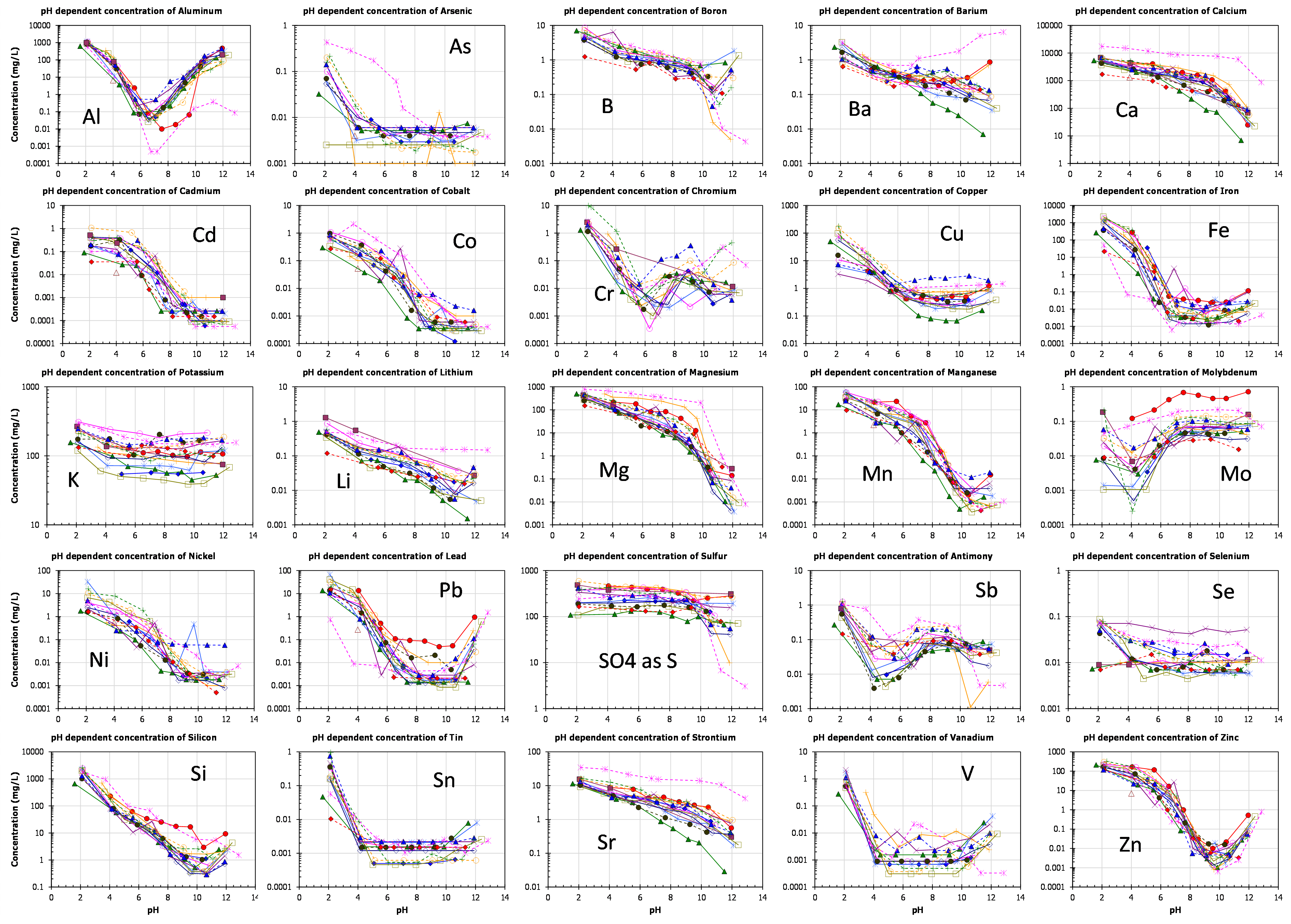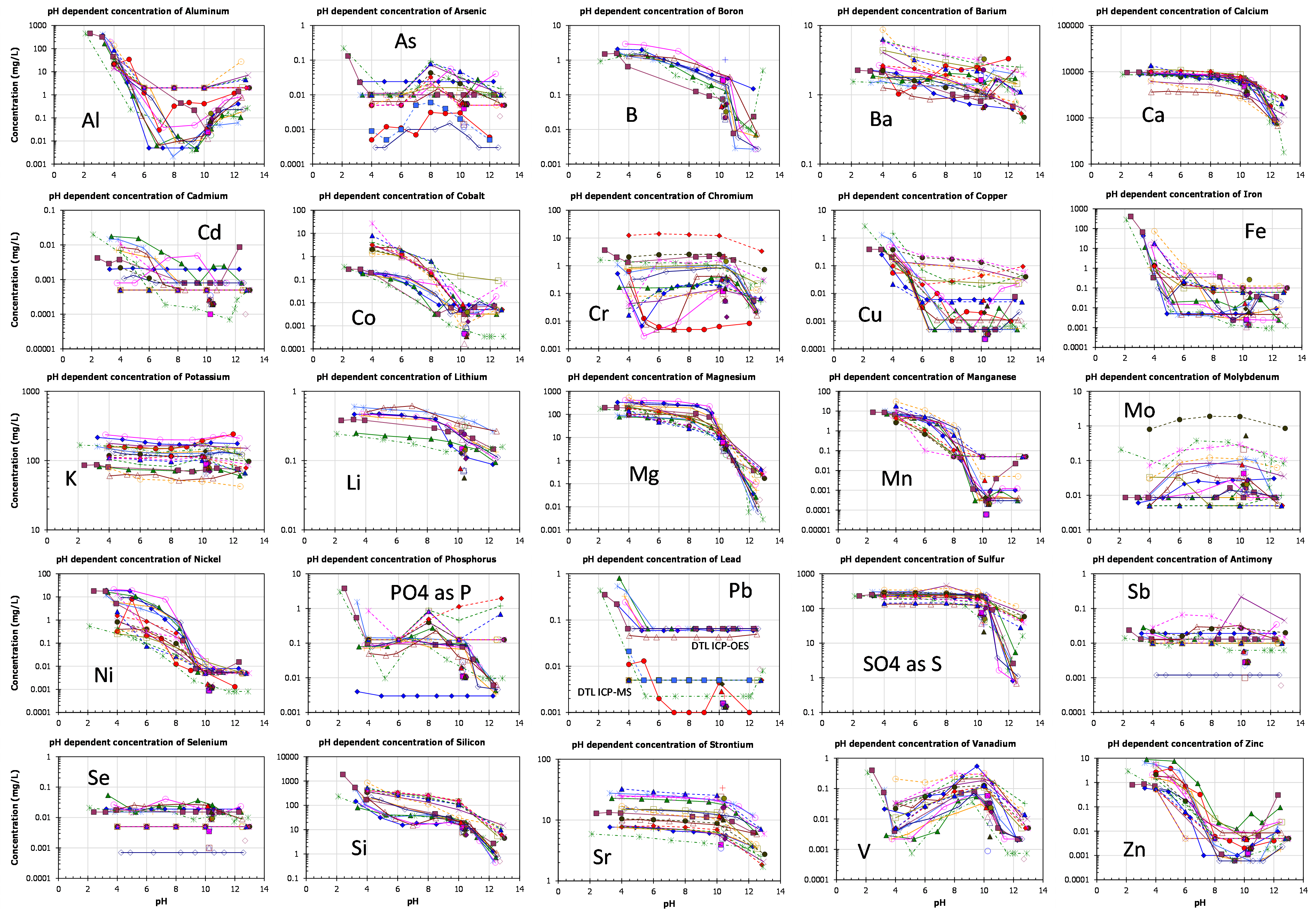Explanation of material leaching data
Below the following information is provided material leaching characteristics for each material in the following parts:
When materials or products are produced by a specific industrial process, the likeliness that the material leaching behaviour is consistent is high. Variability may result from variations in source materials. For example, coal fly ash has many common aspects but the full spectrum of acidic to highly alkaline ashes have an influence on the leaching behaviour of specific elements.
Other examples are municipal solid waste incinerator bottom ashes from worldwide sources, steel slags, electric arc furnace slags, cement mortars and many others.
Examples of comparability between leaching results for materials of the same nature or production process across jurisdictions are given for MSWI bottom ash and cement mortars.
In the figure MSWI bottom ashes from The Netherlands, Germany, UK, Italy, Austria, Denmark, Sweden and Taiwan are included. In general, the leaching behaviour is in spite of widely different origins very consistent indicating that in all cases the solubility controlling phases are much alike.
The highly alkaline bottom ash from Taiwan (probably caused by the high content of shells) deviates for a limited number of elements (Al, As, B, Ba, Ca, Cr, Mg, Sr and some of these only at the high pH end of the curve)

In the figure cement mortars according to EN197-1 from all around the world were tested using the pH dependence test illustrating the consistent leaching behaviour of cement mortars from many different origins. Several cases of blended cements were included, which fit right in the majority of CEM I mortars, except for Cr where the addition of blast furnace slag leads to a substantial reduction of Cr leaching. In case of Pb, part of the analysis was done with ICP-OES and part with ICP-MS. Since the latter are more sensitive the realistic Pb level is below 0.01 mg/l.

Understanding relationships between simple and more sophisticated approaches provides a basis to generate information that can help to increase the level of knowledge on a given matrix substantially, as the sum of the information is more that the parts on their own. Sharing data (with appropriate identity controls to provide anonymity and verification of quality) through databases provides even greater value by providing a wealth of data from analogous cases.
Currently, simplified or regulation driven testing is limited to perceived problem constituents or the regulatory required parameters. Limiting one’s testing to that list often leads to meaningless data by failing to provide information on the parameters controlling the behaviour of the constituents of interest. Enhancing the quality of that data by (possibly with a lower frequency) analysing for major and minor elements and additional parameters like pH, electrical conductivity, redox potential, quantification of sorptive phases and DOC increases the usefulness of the data generation considerably.
Quality control of data taken up in a reference database will be an important task to ensure an adequate basis of reference for end users.
Examples test data
Geochemical modelling
Source term definition